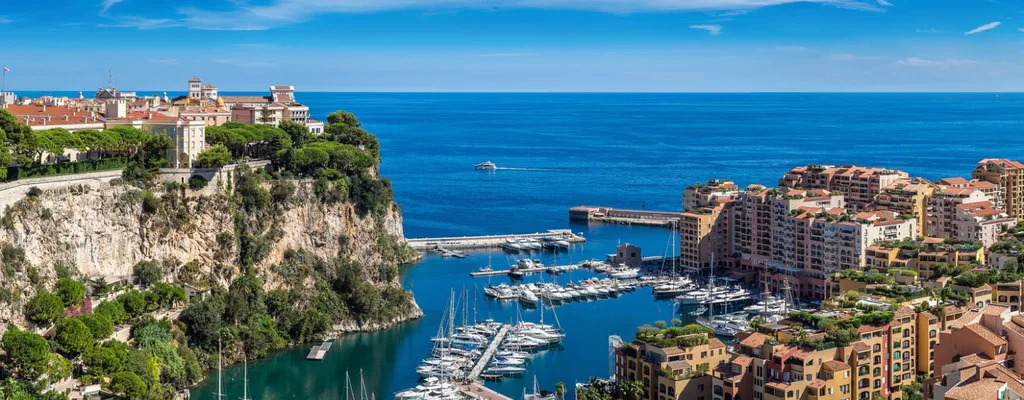THE SECRET KINGDOM OF 1,5 MILLION PENGUINS IN ANTARCTICA
by Erika Cannoletta MONACO A previously unknown ‘supercolony’ of over 1.5 million of Adélie Penguins, a species previously thought to be on the decline because of global warming, has been discovered in the remote Danger Islands of Antarctica. Today, the good news is that the population in the Danger Islands appears to be relatively stable compared to the declining colonies in other regions of Antarctica, probably due to its geographic isolation. Now that this reign of penguins has been unveiled, however, researchers fear that some of the environmental impacts affecting other regions could inevitably jeopardize the security of this colony. As for the Principality of Monaco, the 2nd Monaco Ocean week that was held from 8 to 14 April 2018, has, once again, actively supported ocean conservation.

Since 2009, during his tour of scientific bases in Antarctica, HSH Prince Albert II had the opportunity to meet the researcher David G. Ainley who, for several decades, has been studying Adelie penguins. It was the occasion for the the Prince to discuss the creation of marine protected areas (MPAs), with special focus on the Southern Oceans. Moreover, one year ago, on 29 June 2017, during the opening ceremony of the conference “Antarctica Today and Tomorrow” that took place in Paris, France, Robert Calcagno, CEO of the Oceanographic Institute of Monaco, on behalf of Prince Albert I of Monaco Foundation called for the creation of a new MPA in the East Antarctic and two further MPAs by 2020, one in the Antarctic Peninsula and one in the Weddell Sea. The conference addressed the environmental challenges facing Antarctica and the Southern Ocean. It was organized by the Varda Group on behalf of the Antarctic and Southern Ocean Coalition (ASOC), and convened in partnership with the Oceanographic Institute/Albert I Prince of Monaco Foundation, the Prince Albert II of Monaco Foundation and The Pew Charitable Trusts. The conference brought together 250 participants representing governments, research institutions, non-governmental organizations and civil society. Today, the super colony’s discovery of Adélie Penguins that was made in March 2018, requires the Danger Islands to become specially protected Antarctic areas (ASPA) or Marine Protected Areas (MPA).

Adelies are one of five penguins’ species that live in and around the Artactic Continent. A medium-sized penguin, they grow about 70 centimetres tall, and weigh three to six kilogrammes. They are identified by a white ring around the eye. They are carnivores –and krill –shrimp like creatures that are commercially fished in the area – are Adelies’ staple. The incredible discovery was made following the guano of the animals.Researchers from the Woods Hole Oceanographic Institution used the Landsat satellites in the orbit of NASA and a specific algorithm to find traces of guano in order to study more effectively the dynamics of the penguin population in the region. It soon became clear that the amount of faeces was much higher than the number of penguins that they estimated to be in the known colonies. An expedition to the islands confirmed the existence of the mega-colony, which the researchers then mapped with drones.


The count made the ranking as one of the largest in the world. A study in the journal Scientific Reports documented 751,527 breeding pairs of Adélie Penguins, whose nests were initially stumbled upon in 2006 by a professor at Louisiana State University, Michael Polito. Nine years later in 2015, a return to the islands astonished Polito and his team. The Danger Islands is a group of islands lying 24 km (13 nmi) east-south-east of Joinville Island near the tip of Artarctic Peninsula. They were discovered on 28 December 1842 by a British expedition under James Clark Ross, who so named them because, appearing among heavy fragments of ice, they were almost completely concealed until the ship was nearly upon them. The danger Islands were considered at risk, and rarely visited by researchers. And perhaps because they were so insidious they became a perfect refuge for these birds. According to the March 2018 expedition leader, penguins in this area—which has remained cold—are thriving, whereas on the western side of the Antarctic Peninsula—where warming has occurred—their numbers have been declining.
VIDEO: The incredible discovery was made born following the guano residues of the birds.





